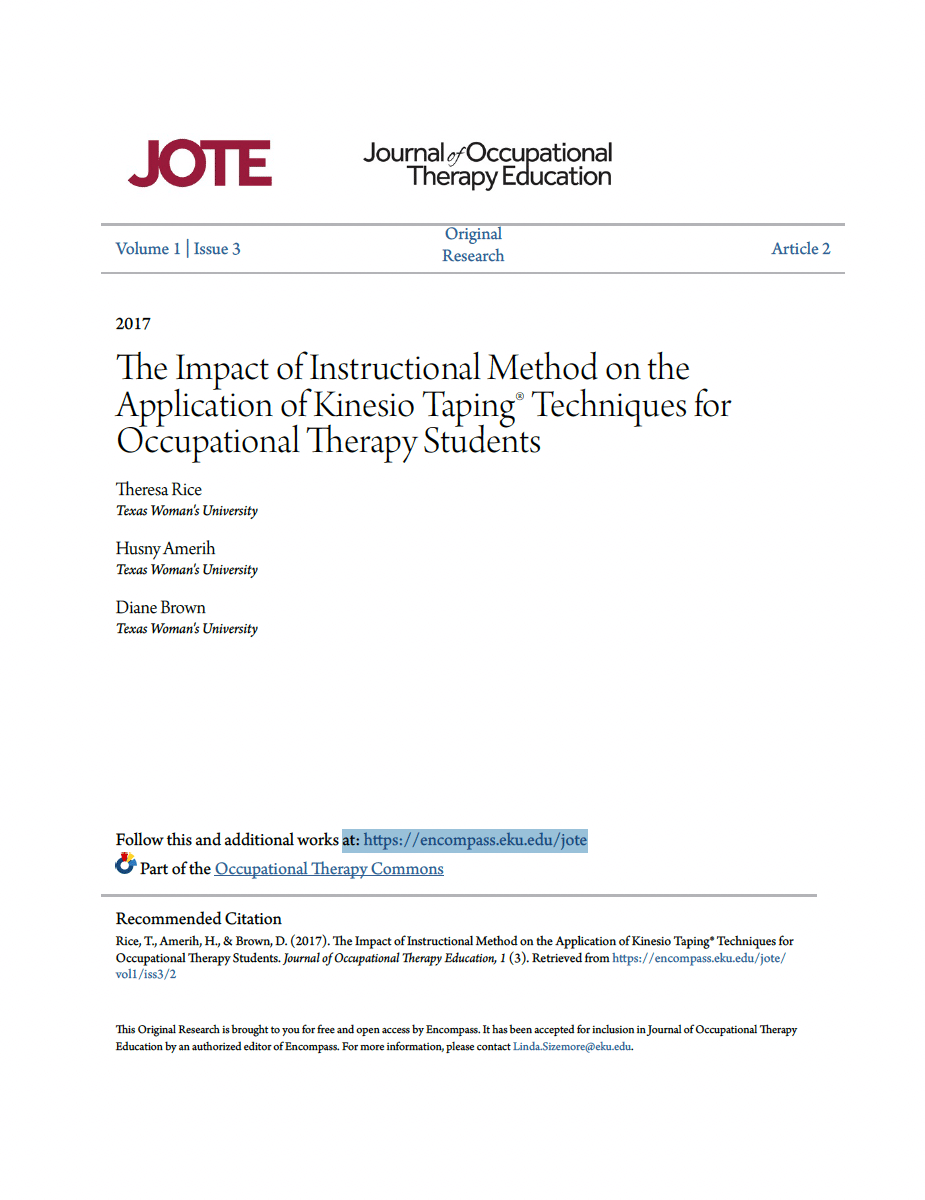The Impact of Instructional Method on the Application of Kinesio Taping® Techniques for
Occupational Therapy Students
Theresa Rice, Husny Amerih, Diane Brown
Abstract
Background-The focus of the study, however, was clinical
reasoning, rather than the development of a specific clinical skill. Consequently, this study will address the comparison of video and written instructional methods. Additionally, the clinical skill of interest will be Kinesio Taping®, as there is no literature
available in occupational therapy on the teaching of this skill.
Methods/ Materials-This survey study utilized a two-group cross-over design. The cross-over design of the study allowed both groups to receive all instructional methods. Students were
randomized into two groups. Survey data was collected following each instructional method. Both groups received assessment on their accuracy in applying Kinesio Taping® techniques.
Results-A total of 32 students participated in the Kinesio Taping® session which included video, written, and in-person instruction of taping techniques. As shown in Table 2, there was a statistically significant difference in level of confidence ratings for students viewing the video instruction as compared to students viewing the written instruction for the wrist extension assist technique.
Conclusion-Overall, additional research is necessary to determine the impact of instructional method on clinical skill development for occupational therapy students. Instructors may address differences in students’ learning styles and preferences using
multiple instructional methods for learning and developing clinical skills.
Keywords-Instructional methods, clinical skill, Kinesio Tape, Tape with wisdom, kinesio live different science




